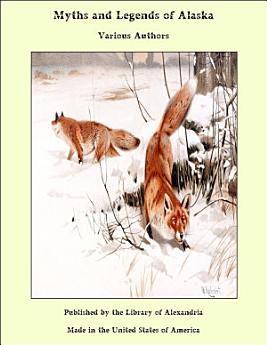Myths and Legends of Alaska
About this ebook
With creation by a Great Spirit, there came dangers from evil spirits. Such spirits carried away the sun and moon, and hung them to the rafters of the dome-shaped Alaskan huts. The world became cold and cheerless, and in the Land of Darkness white skins became blackened by contact with the darkness. So it became necessary to search for the sun and hang it again in the dome-shaped sky above them. Darkness in the Land of Long Night was the cause, through magic, of the bitter winds of winterwinds which came down from the North, bringing with them ice and cold and snow. This was the work of some Great Spirit which had loosened the side of the gray cloud-tent under which they lived, letting in the bitter winds of another world. Spirits blow the mists over the cold north sea so that canoes lose sight of their home-land. Spirits also drive the ice floes, with their fishermen, far over the horizon of ocean, into the still colder North. Spirits govern the run of the salmon, the catching of whales, and all the life of the people of the North who wage such a terrific struggle for existence.
So there must needs be those who have power over the evil spirits, those who by incantations and charms of magic, by ceremonial dancing in symbolic dress, can control the designs of those who work ever against these children of the North. Thus there arose the shamans with all their ceremonies.
The myths in this volume are authentic. The original collections were made by government ethnologists, by whose permission this compilation is made. And no effort has been made, in the telling of them, to change them from the terse directness of the natives. The language of all Indian tribes is very simple, and to the extent that an effort is made to put myths and legends into more polished form, to that extent is their authenticity impaired.
Only the quaintest and purest of the myths have been selected. Many Alaskan myths are very long and tiresome, rambling from one subject to another, besides revealing low moral conditions. These have been omitted, as have also those which deal with the intermarriage of men and birds, and men and animals. Such myths are better left among government documents where they can be readily consulted by those making a special study of the subject. They are hardly suitable for any collection intended for general reading. The leading myth of the North, however, the Raven Myth, is given with a fair degree of completeness. It would not be possible, nor would it be wise, to attempt a compilation of all the fragments of this extensive myth.




